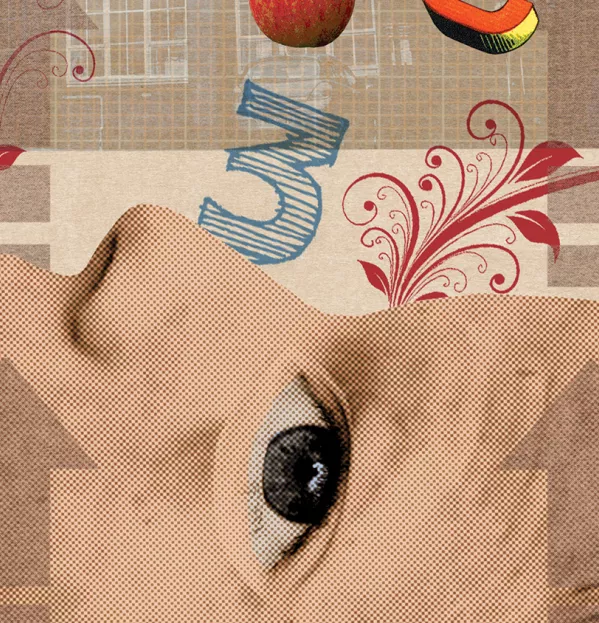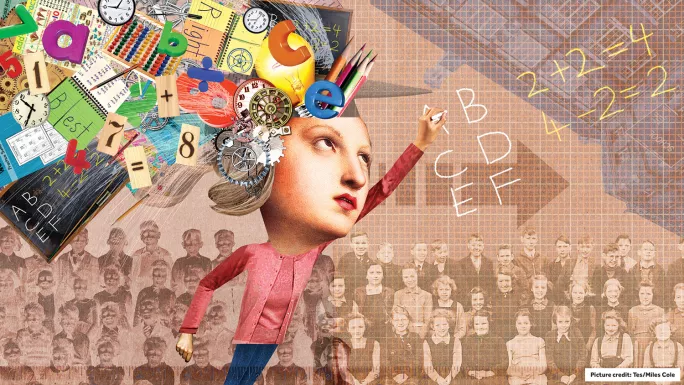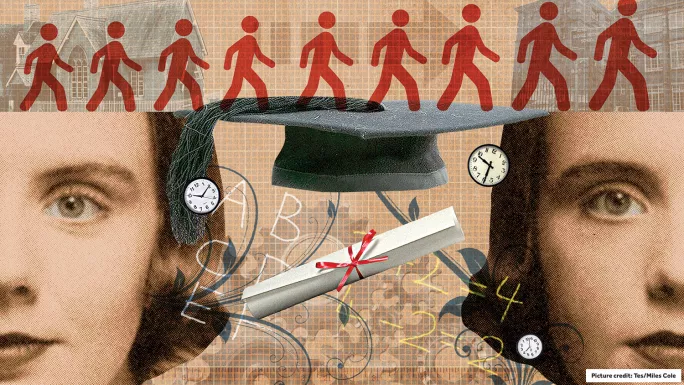
- Home
- Teaching & Learning
- Secondary
- How primary colours can brighten secondary learning
How primary colours can brighten secondary learning

Teacher Nicky Murphy and her pupils are delving into the Black Death - the children like the “gore”. Such vivid takes on eclectic topics are nothing new for Murphy. As a primary teacher for more than 20 years, covering subjects from RE to maths and everything in between, her job required her to be a master of all trades.
The big difference now is that this primary teacher is out of her usual habitat: Murphy works full-time in a secondary school.
It was Shelley McLaren - at the time, Craigroyston Community High’s curriculum leader for English and now acting head - who “begged” for a primary teacher at the Edinburgh school.
“I’ve been to university and I have done my teacher training, but I’ve never been taught to teach children how to read or write and do all the basics, all the fundamentals,” says McLaren. “Yet, we were getting kids arriving here who did not know the alphabet. How do you suddenly go from that to Shakespeare?”

Murphy has been working at the school as part of a two-year secondment, focusing on pupils in early secondary who are struggling to get up to speed in the big, daunting surroundings of high school, which can feel a million miles from the cosier setting of primary. It’s an unusual hiring decision for a Scottish secondary school, but staff are convinced it’s the right one.
Every year, around a fifth of pupils arriving at Craigroyston have a reading age of 8 or younger. McLaren doesn’t see that changing anytime soon, given the pronounced poverty that blights the school’s catchment area: 70 per cent of pupils come from the 40 per cent most deprived postcodes in Scotland.
Never mind Shakespeare, even teaching basic punctuation was hugely challenging given some children’s lack of skills, says current curriculum leader for English, Eimear Haskins. Like McLaren, she felt ill-equipped to plug the gaps in their knowledge, and saw how this affected pupils’ chances of navigating not only the curriculum but also banal challenges in daily life that most people never give a thought to.
‘Having a primary specialist is important’
“You’re not taught on the secondary PGDE how to teach children to read, write and spell,” says Haskins. “We were missing that skill set and, while we could attend CPD and observe [primary] lessons, having a specialist was important to us and the pupils because we’re doing the kids a disservice if we don’t teach them these basic skills.
“They need these skills to access the school curriculum, but they also need to be able to survive outside school. One pupil said to me that when they were looking at the bus timetable, they couldn’t read when the next bus was coming.”
It was a similar story in maths: curriculum leader Lynn Brown was receiving pupils who did not know their number bonds up to 10 - that 6+4 or 3+7 makes 10.
McLaren admits there was a time when she questioned what was going on - or not going on - in primary schools, given that pupils left these settings lacking such basic skills. Then she realised that primary teachers had children starting school who, at age 4 or 5, used very little spoken language and had yet to master the most elementary skills essential to getting on in life.
“When you actually go into the primary school, you see that some are going into P1 still in nappies and unable to use the toilet properly,” she says. “The value [primaries] have to add is huge - the children are so far behind because of their start in life.”

Having a primary teacher at Craigroyston has helped to drive down class sizes in English and maths. This year, the school has been able to create an extra class for English and maths in S1 and S2. The classes that need the most help are taken by Murphy and have fewer than 10 pupils.
“We could have had six sets of 20 [in S1], but we find the most able get a lot out of the competition and challenge generated by being in a class of 28 or 29, and then in your least-able set you have seven or eight pupils,” says McLaren.
Craigroyston’s teachers do not value Murphy purely for her pedagogical knowledge - they also say she is “an encyclopaedia of resources”. Her familiarity with literacy and numeracy interventions used in primary schools is helping to smooth the often difficult (for some pupils, even traumatic) transition up to secondary. As Brown puts it, Murphy has “seen both sides of the coin”.
The need to support the move from P7 to S1 is one of the long-standing challenges facing the education system, and so is the infamous dip in attainment that often takes place in early secondary. The Scottish Survey of Literacy and Numeracy has been scrapped by the Scottish government, but the final set of results from 2016 show that more than half of pupils were not hitting the expected level for writing, listening and talking in S2, and 18 per cent were not hitting the expected level for reading.
In places where pupils do not face such momentous change moving up to S1, the picture appears different. For example, the head of the all-through Jordanhill School in Glasgow, where pupils in upper primary spend 25 per cent of their time with secondary specialists, says there is no dip in attainment there (see box, page 16).
This relatively seamless primary-secondary transition is still rare in Scottish schools. However, the idea of amassing a group of specialist teachers who could bridge the primary-secondary divide appears to be gathering pace, with the extra money going to schools to close the “poverty-related attainment gap” - through schemes such as the Pupil Equity Fund - giving them more freedom to experiment.
Murphy’s two-year secondment from neighbouring St David’s Primary is funded by Craigroyston, using some of the £125,000 a year it receives via the Scottish Attainment Challenge. Similarly, 14 miles down the road from Craigroyston, in Midlothian Council’s Lasswade High, a primary teacher has been splitting her time between the secondary and one of its feeder primaries, Burnbrae. That post is also funded using Attainment Challenge money.
Crossing boundaries
This kind of short-term experiment has been done before, but with the focus now firmly on driving up the attainment of struggling pupils, there seems more chance of long-lasting cross-pollination between the primary and secondary sectors.
For the past year, the University of Edinburgh has been training up 27 teachers who will have knowledge and experience of primary and secondary. This month, it took on 30 more.
Dr Aileen Kennedy is the director of the two-year master’s course, Transformative Learning and Teaching. The university started the course partly because the “broad general education” under Curriculum for Excellence spans nursery to S3 but also because of a firm belief that “children’s learning does not suddenly change when they go to high school”.
“Transition has always been an issue, and we know a lot of children in S1 and S2 have a dip,” says Kennedy. “It seemed to us to be a really sensible thing to educate teachers to understand and know about what happens at the top end of primary and in lower secondary.”
The General Teaching Council for Scotland (GTCS), meanwhile, is in the process of setting up a working group to look at a new category of registration for a “broad general education teacher”, capable of teaching up to S3. It is, however, a controversial move in Scotland, where the rule is that secondary teachers must be educated to degree level in the subjects they deliver.
Ellen Doherty, director of education registration and professional learning at the GTCS, emphasises that its investigation of a new category is at an early stage, and that nothing will be done that would undermine a child’s quality of education. The GTCS argues that this new breed of teacher could ease transition and drive up achievement and attainment.
However, teaching unions have warned in the past that generalists teaching in secondary could become “second-class people in the school”, and that a “two-tier system in the secondary sector” could be created, because some teachers would have degrees in the subjects they were delivering while others would not.
Back at Craigroyston, maths curriculum leader Lynn Brown dismisses this as “nonsense” and “insulting”. She is clear: “Nicky is the specialist when it comes to our low-ability kids.”
Secondary teachers are the experts when it comes to delivering national qualifications - but not when it comes to teaching children to read, write and count, Nicky Murphy agrees.
“It’s about understanding what they need to be learning next,” she adds. “Secondary teachers know the National 5 and Higher courses, but do they know how children develop in their maths and English from P4 to P5? I have that understanding.”
Emma Seith is a reporter for Tes Scotland. She tweets @Emma_Seith



